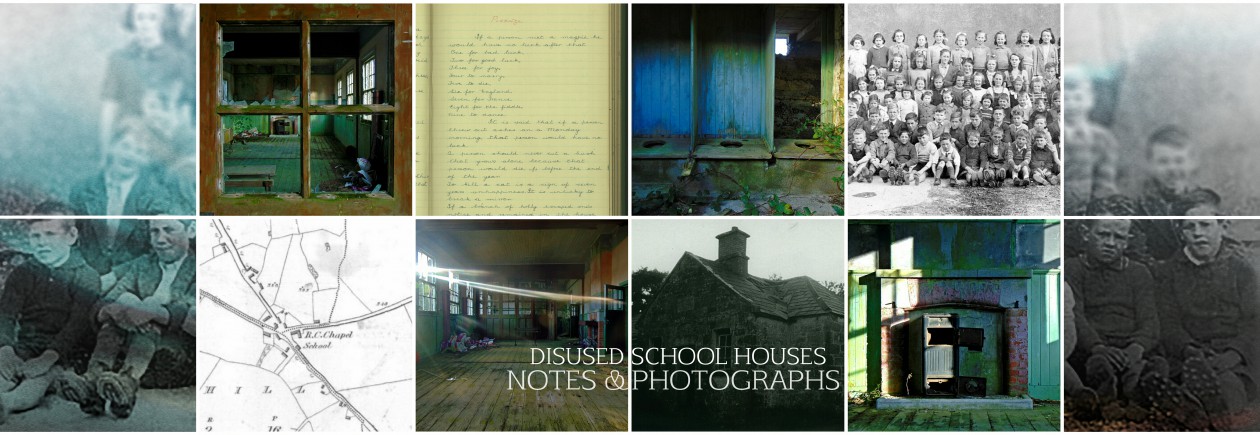Scoil An Cneagain/Cregganbaun National School, Cregganbaun townland, Co. Mayo
(dated: 1945)
NGR: 080756, 274223
The coastline of County Mayo is a forgotten gem in the Irish landscape. Mountainous and barren for the most part, the area attracts the more adventurous visitors who are willing to stray off the well beaten tourist track that generally takes in the southern half of the island of Ireland. In recent years, the popularity of the Wild Atlantic Way has brought and increase in tourism to the area. When I most recently passed through the region, I was making my way from Kilary Harbour to Westport. Taking the scenic route, my journey brought me northward by the shores of Doo Lough, a small lake that is hidden between the overshadowing Mweelrea and Sheefry mountain ranges.

After emerging from the mountain pass, the R335 headed north toward the town of Louisburgh. There was little by way of settlement between the mountain pass and Louisburgh, and the small regional road had little to navigate except expansive boglands with the Sheefry mountains providing a dramatic backdrop. The roadway gently bulged over the peatlands and there was little roadside vegetation to interrupt the view across the bog as I passed the occasional singe rural dwelling. Not many people live here I thought.
Much of this landscape had been empty since the Great Famine of the mid-19th century, and I associate sadness with this particular area. You see the route I was driving was in fact the route of the ‘Doolough Tragedy’, which occurred in March 1849. The Doolough Tradgedy is a journey many starving people were forced to make through the Doolough Valley to attend an inspection and get famine relief at Louisburgh. For unknown reasons the inspection was not made, and the hundreds of people were then told to appear at Delphi Lodge near Kilary Harbour. They walked the eleven miles in cold and wintry conditions, but, when they got to Delphi Lodge, they were refused either food or tickets of admission to the workhouse. On the journey back home more than 400 people died.
The population never recovered after the famine, and there is not much by way of infrastructure here today. Nonetheless passing near the townland of Creggabaun in the Civil Parish of Kilgeever, I came across an old two-roomed school house by the roadside. There was only one house nearby and it’s difficult to imagine a time when a school was needed in these parts.

The building comprised a detached five-bay single-storey national school, dated 1945. From the outside, it looked as grey and dismal as the foreboding overcast sky that had drifted over when I stopped to take a few snaps. I rushed inside to take shelter from the on-coming rains, and in there I discovered a brightly coloured interior, strewn with rubbish and old furniture.

There were two classrooms, both once heated by oil burners. The plaster fell from the walls revealing the coarse stonework underneath, and the roof looked like it wouldn’t hold out to the elements much longer. To the rear were the toilets, with toilet doors painted a discomforting yellow colour. As the rain began to fall and drip through the holes in the ceiling, I thought to myself that this is one of those schools that people romantically think of as wonderfully isolated and wholesome – the reality being that you are surrounded by the exposed, damp and peaty landscape; truly a delight in the summer, though I’m sure the Atlantic gales can make a wet and dark winter seem very long.

The dilapidated national school was erected to a standardised design attributable to the Office of Public Works and represented an integral component of the mid 20th-century built heritage of County Mayo. A prolonged period of neglect notwithstanding, the elementary form and massing survive intact together with substantial quantities of the original fabric, thereby upholding much of the character or integrity of a national school making it a pleasing, if increasingly forlorn visual statement in a rural setting encircled by the Sheefry Hills.

Cregganbaun National School is now disused and local children travel to modern schools at Killeen or Louisburgh.

